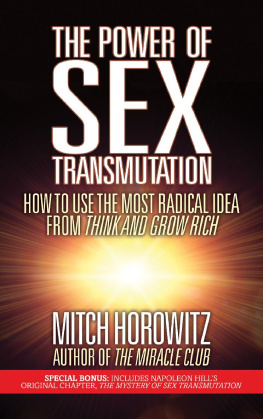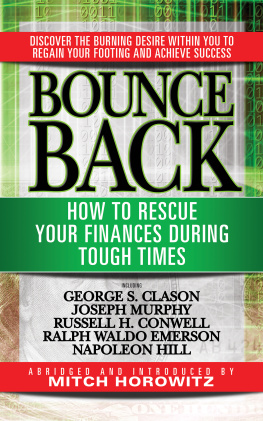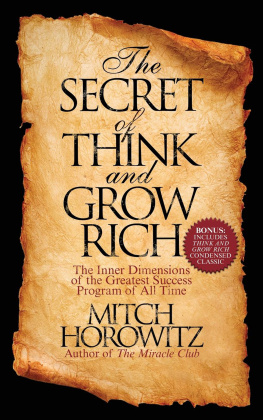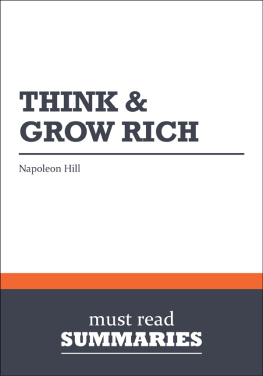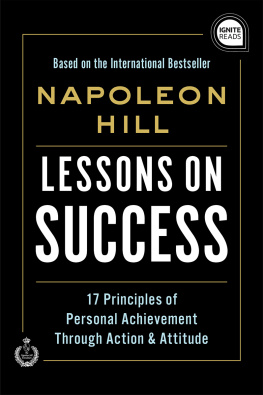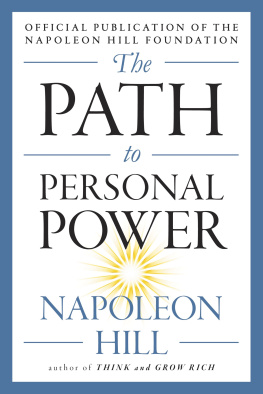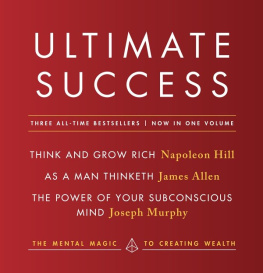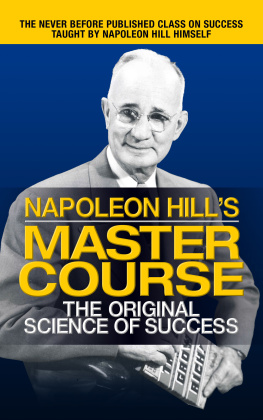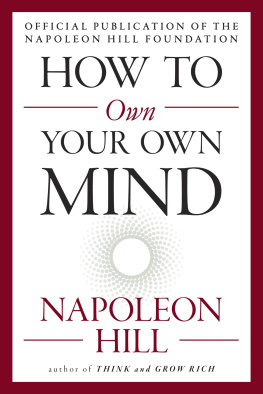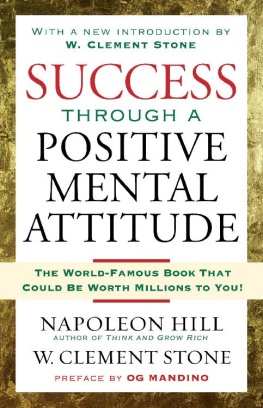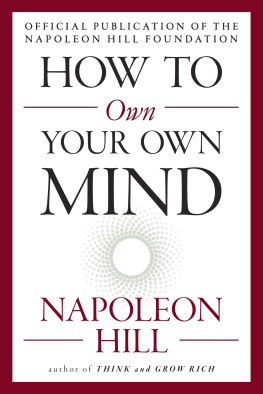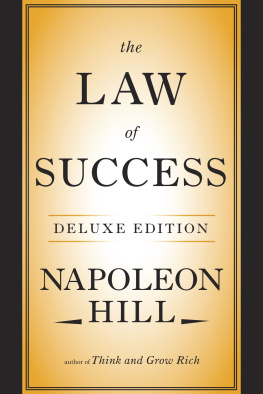
The Power
of the
MASTER MIND
The Napoleon Hill Success Course series
The Miracle of a Definite Chief Aim
The Power of the Master Mind
Secrets of Self-Mastery
Thrive Through Organized Thinking
Autosuggestion: Your Key to a New Life
Profiting from Failure
Winning Through Charisma
The Magic of Enthusiasm
The Sixth Sense: Your Connection to the Infinite
The Golden Rule: Your Inner Secret to Prosperity & Power
The Napoleon Hill Success Course series
The Power
of the
MASTER MIND
By MITCH HOROWITZ
Inspired by the Teachings of
NAPOLEON HILL
An Approved Publication of the Napoleon Hill Foundation


Published by Gildan Media LLC
aka G&D Media
www.GandDmedia.com
Copyright 2019 The Napoleon Hill Foundation
Portrait of Napoleon Hill copyright 2019 by Tim Botta
No part of this book may be reproduced or transmitted in any form, by any means, (electronic, photocopying, recording, or otherwise) without the prior written permission of the author. No liability is assumed with respect to the use of the information contained within. Although every precaution has been taken, the author and publisher assume no liability for errors or omissions. Neither is any liability assumed for damages resulting from the use of the information contained herein.
First Edition: 2019
Front Cover: Randall Friesen
Interior design by Meghan Day Healey of Story Horse, LLC.
Library of Congress Cataloging-in-Publication Data is available upon request
ISBN: 978-1-7225-1014-5 (hardcover)
eISBN: 978-1-7225-2117-2 (ebook)
Manufactured in the United States of America
by LSC Communications
10 9 8 7 6 5 4 3 2 1
To Liam OMalley,
who brought me into the Master Mind
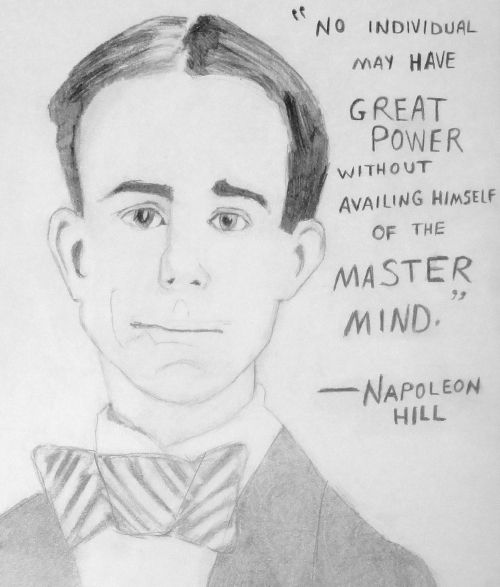
PORTRAIT OF NAPOLEON HILL, 1908, THE YEAR HE MET ANDREW CARNEGIE, BASED ON A PHOTOGRAPH FROM BOB TAYLOR S MAGAZINE, BY TIM BOTTA
Contents
What Is the Master Mind?
There is one mind common to all individual men. Every man is an inlet to the same and to all of the same.
R ALPH WALDO EMERSON, H ISTORY, 1841
This book is about the most neglected step in Napoleon Hills philosophy of successand the one that he personally described as vital to the overall workability of his program: the formation and maintenance of a Master Mind group.
Great power, Hill wrote of the Master Mind in 1937, can be accumulated through no other principle.
Simply put, the Master Mind group is an alliance of as few as two and as many as seven members who regularly assemble to support one anothers aims, plans, and ideas. The members exchange advice and counseland something more. Hill believed that when a group of people join together in a spirit of harmony, purpose, and mutual aid, whether aiming toward a single goal or, as is more commonly the case, assisting one another in individual goals, the participants provide not only valuable advice and ideas, but also pool their intellects in a manner that heightens the abilities of all of them.
This mental pooling, Hill taught, brings an additional force to their effortsthis is the Master Mind, which is an inlet of what Hill called Infinite Intelligence. The Master Mind is Infinite Intelligence localized. (He capitalized these terms, and I have continued that practice in this book.) Hill observed:
When two or more people coordinate in a spirit of HARMONY, and work toward a definite objective, they place themselves in a position through that alliance, to absorb power directly from the great universal storehouse of Infinite Intelligence. This is the greatest of all sources of POWER. It is the source to which the genius turns. It is the source to which every great leader turns (whether he may be conscious of the fact or not).
Transcendentalist philosopher Ralph Waldo Emerson termed this process of tapping a higher mind The Over-Soul, the title of one of his most important essays. His concept of the Over-Soul is, in a sense, the inner key to Hills idea. Emerson could have been talking about the Master Mind when he wrote:
And so in groups where debate is earnest, and especially on high questions, the company become aware that the thought rises to an equal level in all bosoms, that all have a spiritual property in what was said, as well as the sayer. They all become wiser than they were.
What Makes a Group?
In his classic Think and Grow Rich, Napoleon Hill described the Master Mind as: Coordination of knowledge and effort, in a spirit of harmony, between two or more people for the attainment of a definite purpose.
This coordination requires meeting at regular intervalsthis is not a casual assemblage but a scheduled gathering of at least once a week. As noted, the Master Mind group consists of as few as two members, but usually no more than seven to keep things wieldy. The groups basic function is to support and advise members in their individual goals; depending on the nature of the group, members may also offer one another prayers, meditation, and visualizations. In between meetings, members always hold one anothers wishes in mind with highest esteem and encouragement. Although a Master Mind group can focus on a single goal, groups usually support each members individual plans, purposes, and needs.
Hill wrote about two types of Master Mind groups. One type had a single goal, such as the manufacture of steel by industrialist Andrew Carnegie and his group, or the manufacture of automobiles by Henry Ford and his group. Others work together to help each member accomplish a personal goal or goals. Examples from Hills book The Law of Success include the Master Mind groups established by Ford, Thomas Edison, and Harvey Firestone, and the Big Six in Chicago, consisting of chewing gum magnate William Wrigley and five others engaged in unrelated businesses. In this book, I focus on the latter type of Master Mind group, which works on the various goals of each member, because it can benefit many more people.
Hill emphasized that groups must gather in a spirit of harmony, personal affinity, and chemistry. There can be no divisiveness. Any kind of factionalism, conflict, or gossiping within the Master Mind will deplete its energies. If harmony prevails, the group will increase the creativity, intuition, and mental faculties of every member. But if the alliance descends into friction, it will be no more valuable than a group of strangers chattingworth no ones time.
For this reason, you must select the members of your Master Mind group carefully, emphasizing personal affinity, shared values, and a zeal for cooperation. Any kind of pettiness, squabbling, or political arguments (always keep politics at bay) will stifle the effectiveness of the Master Mind.
Unless you are invited to join an existing group or are already part of one, you may need to assemble a group of your own. When putting together the members of your Master Mind group, you must be decisive and selective: this is not a time to idly give someone a try or allow someone in because you are shy about saying no. Comity and chemistry are vitalit requires choosing your colleagues with care.
Next page


